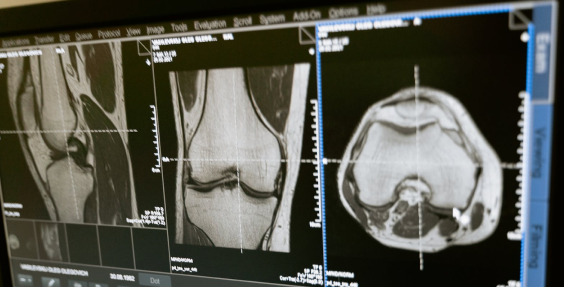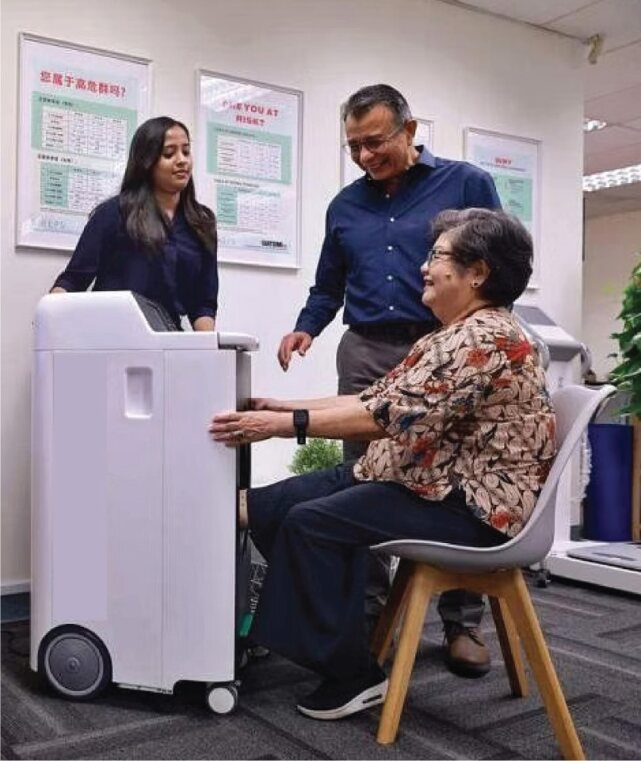About
Aging and Frailty
Aging is a natural process characterized by a gradual decline in physiological functions and an increased vulnerability to many health issues. Frailty often accompanies aging, presenting as a state of decreased physiological reserve and increased susceptibility to stressors, leading to higher risks of adverse health outcomes. Magnetic fields, particularly in the context of our electromagnetic field (EMF) therapy, have garnered interest for their role in addressing many aspects of aging and frailty through the modulation of skeletal muscle, bones, and adipose tissue.

Sarcopenia
Sarcopenia

Sarcopenia is the age-related loss of muscle and physical decline that plague the elderly. A selective loss of glycolytic-muscle fibres and their skeletal muscle satellite cell pool characterise sarcopenia, whereas the number of oxidative-fibre-associated satellite cells was similar with age. Specifically, sarcopenic glycolytic fibres exhibit a pronounced loss in cross-sectional area (~26%), whereas the cross-sectional area of oxidative fibres was unchanged relative to the young. Mitochondrial dysfunction was also more prevalent in glycolytic muscle in ageing mice but was maintained in oxidative muscle. In an intriguing parallel to DMD, oxidative fibres exhibit superior survival potential. One interpretation of the available evidence is that oxidative muscle confers survival to the individual during age-related muscle loss, reflecting frailty merely by association, and may, hence, represent a viable target for therapeutic intervention.
Resistance exercise, and endurance exercise to a lesser degree, produce mechanical stress and microdamage, which may serve as a stimulus to spur muscle regrowth. In this respect, physical exercise also creates a biosynthetic regenerative energy debt that will need to be allocated towards the repair and rebuilding of damaged muscle tissue. Inadvertently, this will limit biosynthetic energy availability to implement metabolic adaptations. ELF-PEMF (extremely low frequency, pulsing electromagnetic fields) exposure, as it is low energy and non-mechanical, represents a more focussed form of mitochondrial stimulation. ELF-PEMF exposure may thus render stronger mitochondrial responses via the PCG-1α and Nrf2 transcriptional pathways, while producing relatively less impetus for muscle hypertrophic remodelling. It would thus be better to combine PEMF therapy with exercise, if and when possible, for greatest physiological synergism. It was shown that functional mobility improved in conjunction with reduced pain in a group of elderly subjects receiving weekly ELF-PEMF treatment. These results suggest that magnetic therapy may represent one manner to capacitate the elderly to undertake exercise more readily. In support of potential magnetic-therapy–exercise synergism, it was previously shown that mice, having received ELF-PEMF treatment, exhibited improved running performance after five weeks (10 min of exposure per week). Magnetic therapy may serve as an option for such frail demographics to maintain metabolic balance and to exploit the systemic regenerative benefits conferred by the muscle secretome whilst combating sarcopenia.

Bone Health
Bone Health

Osteoporosis is defined as low bone mineral density caused by altered bone microstructure, ultimately predisposing patients to low-impact, fragility fractures. Osteoporotic fractures lead to a significant decrease in quality of life, with increased morbidity, mortality, and disability. Exercise is an established preventative and treatment measure for osteoporosis. However, the physical challenge of exercising makes it inaccessible to certain subpopulation of patients.
To address this, we studied the effects of magnetic exposure on bone health. In animal studies, magnetic intervention alone, given once a week (10 min) for 8 weeks, significantly increased median tibia bone volume (~21mm3) by 45% when compared to sedentary mice (~15 mm3). Direct PEMF exposure of was associated with fortification of the cortical bone structure as indicated by a significantly higher median cortical thickness (+9%), cortical volume (+15%) and cortical bone mineral density (+1.1%) than the sedentary mouse cohort.

Frailty
Frailty

An international consensus report in 2006 characterized frail elders as having impairments in mobility, balance, strength, motor processing, cognition, nutrition, endurance (fatigue) and physical activity Exercise is a well-known tool to combat or delay frailty however the irony is that frail elderly often find it difficult to exercise. To address this challenge, magnetic stimulation of muscle can be introduced. Through employing basic mobility tests, we found that magnetic therapy ameliorated age-dependent losses in physical capacity, an important aspect of frailty. We found that weekly exposure of the quadriceps musculature for 10 min a time, over a course of 8-12 weeks was sufficient to show a meaningful improvement. Importantly, magnetic therapy-associated improvements are greatest in the older and more frail participants, which are commonly coincident phenotypes. Our work shows that weekly magnetic exposure improved mobility of participants, where the older participants showed the greatest improvement.

